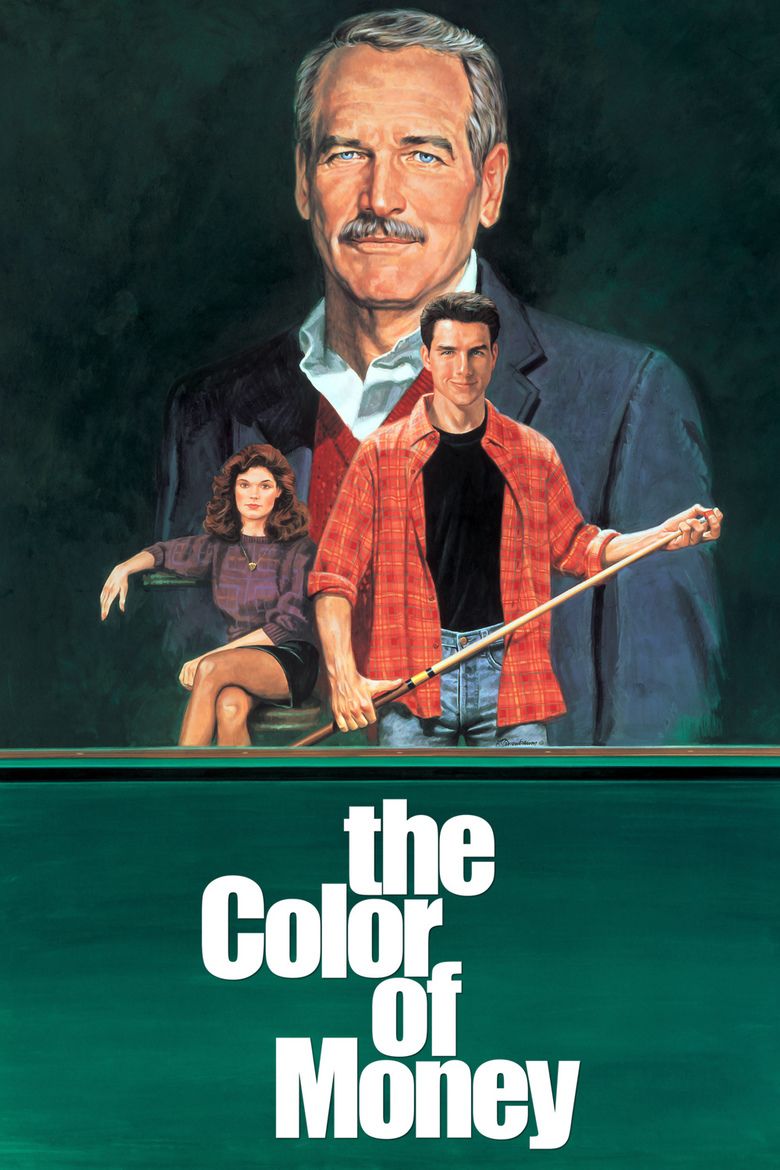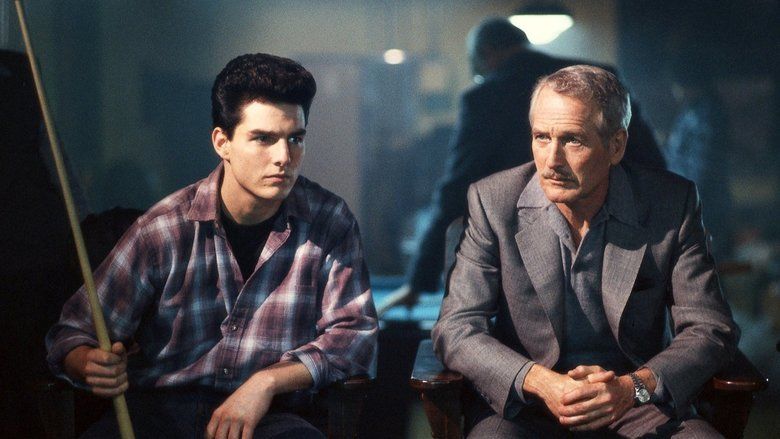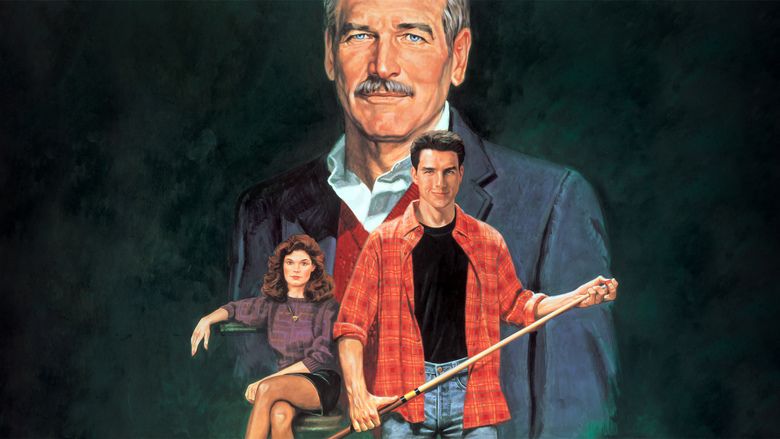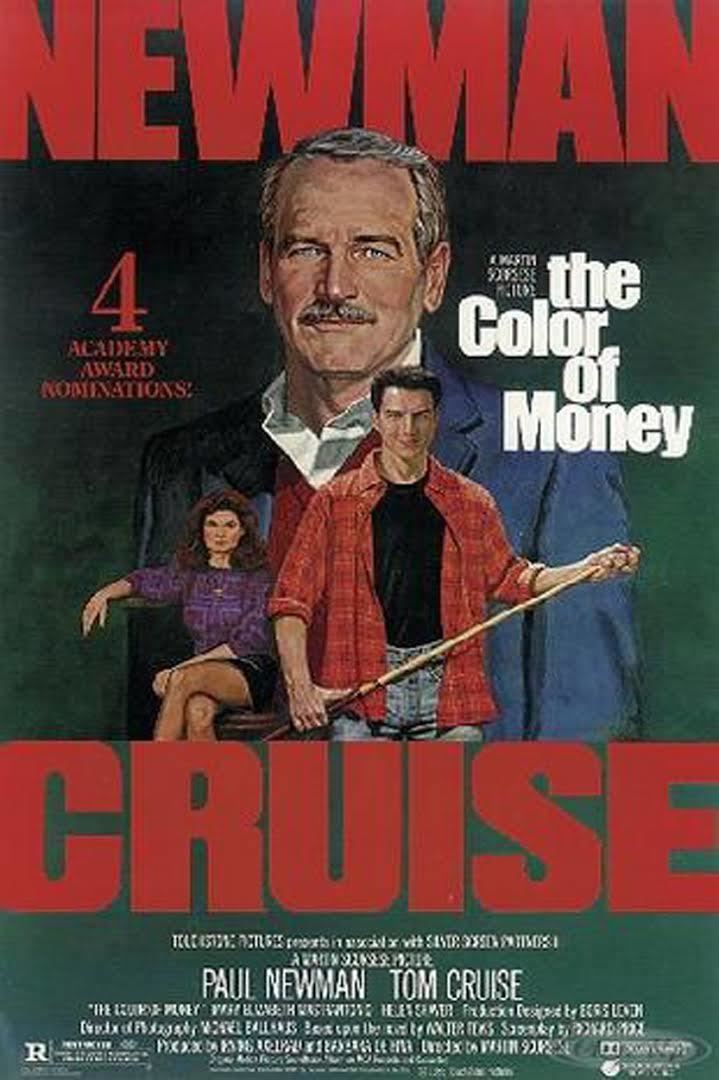The Color of Money
7.4 /10 1 Votes7.4
90% Rotten Tomatoes Country United States | 7/10 IMDb 2.5/4 Roger Ebert Genre Drama, Sport Duration Language English | |||||||||||||||||||||||||||||||||
 | ||||||||||||||||||||||||||||||||||
Release date October 17, 1986 (1986-10-17) Cast (Fast Eddie Felson), (Vincent Lauria), (Carmen), (Janelle), (Julian), (Orvis) Similar movies Southpaw , Varsity Blues , Blackhat , Cars , Million Dollar Arm , Good Will Hunting Tagline The Hustler isn't what he used to be. But he has the next best thing. A kid who is. | ||||||||||||||||||||||||||||||||||
The color of money trailer 1986 hd
The Color of Money is a 1986 American drama film directed by Martin Scorsese from a screenplay by Richard Price, based on the 1984 novel of the same name by Walter Tevis. The film stars Paul Newman and Tom Cruise, with Mary Elizabeth Mastrantonio, Helen Shaver, and John Turturro in supporting roles. It features an original score by Robbie Robertson.
Contents
- The color of money trailer 1986 hd
- Plot
- Cast
- Production
- Opening voice over
- Soundtrack
- Release
- Critical reaction
- Academy Awards
- Others
- Home video
- References

Newman won the Academy Award for Best Actor for his performance, his first Oscar win after eight nominations, seven of them for Best Actor.

The film continues the story of pool hustler and stakehorse Edward "Fast Eddie" Felson from Tevis' first novel, The Hustler (1959), with Newman reprising his role from the 1961 film adaptation. It begins more than 25 years after the events of the previous film, with Eddie retired from the pool circuit. Although Tevis did author a screenplay, adapting the storyline from his novel, the filmmakers decided not to use it, instead crafting an entirely different story under Tevis' title.

The Color of Money was released by Touchstone Pictures.
Plot
Eddie Felson is a former pool hustler turned successful liquor salesman. One night he meets Vincent Lauria, a young, charismatic pool player and video gamer who plays small-time nine-ball games while working as a sales clerk at a toy store. Eddie, who still stakes bets for players, persuades Vincent and girlfriend/manager Carmen to go on the road, where he can teach Vincent how to make much more money through hustling pool.
With Eddie staking their bets, Vincent visits a series of billiard halls where Eddie tries to teach him that "pool excellence is not about excellent pool." Although Carmen is a quick study, Vincent chafes at Eddie's scams, which routinely require him to play well below his abilities. Eventually, Fast Eddie picks up a cue himself, and does well in several games, but is taken in by a pool shark named Amos. Humiliated, Eddie leaves Vincent and Carmen with enough money to make it to the championships in Atlantic City.
Wearing new prescription eyeglasses, Eddie begins working out and practicing. He enters the 9-ball tournament in Atlantic City and, after several victories, finds himself facing off against a more world-wise Vincent. He beats Vincent, but later, when he is celebrating with girlfriend Janelle, Vincent arrives and informs Eddie that he intentionally lost in order to collect on a bet. He gives Eddie $8,000 as his "cut." During his semi-final match against Kennedy, Eddie sees his reflection in the cue ball; disgruntled, he chooses to forfeit the game.
Out-hustled again, Eddie returns the money, saying that he wants to beat Vincent legitimately. The two set up a private match, where Eddie informs Vincent that if he doesn't beat him now, he will in the future because "I'm back!"
Cast
Production
Scorsese has cited the influence of techniques and lighting in the 1947 Powell-Pressburger classic Black Narcissus in making the film. In particular he states that the extreme close ups of Tom Cruise around the pool table were inspired by those of the nuns in that film. Newman said that the best advice he was given by Scorsese was to "try not to be funny". Cruise performed most of his own shots. An exception was a jump shot over two balls to sink another. Scorsese believed Cruise could learn the shot, but that it would take too long, so the shot was performed for him by Mike Sigel. Cruise mentioned, to prepare for the role, he bought a pool table for his apartment and practiced for hours on end. Standing in for the extremely valuable "Balabushka" cue in the movie was actually a Joss J-18 (which later became the Joss 10-N7), made to resemble a classic Balabushka.
Mike Sigel was technical director, and he and Ewa Mataya Laurance served as technical consultants and shot-performers on the film.
Absent from the film is the character Minnesota Fats, played by Jackie Gleason in The Hustler. Newman later said that he had wanted the character to appear, but that none of the attempts to include him fit well into the story that was being written. According to Scorsese, Gleason apparently agreed with Newman's opinion that Minnesota Fats was not essential to the film's story. Scorsese said that Gleason was presented a draft of the script that had Fats worked into the narrative, but that upon reading it, Gleason declined to reprise the role because he felt that the character seemed to have been added as "an afterthought".
Opening voice-over
Reflecting the general theme of the film, director Martin Scorsese delivers an opening uncredited voiceover, describing the game of nine-ball, over a scene of cigarette smoke and a piece of cue chalk:
Nine-Ball is rotation pool, the balls are pocketed in numbered order. The only ball that means anything, that wins it, is the 9. Now, the player can shoot eight trick shots in a row, blow the 9, and lose. On the other hand, the player can get the 9 in on the break, if the balls spread right, and win. Which is to say, that luck plays a part in nine-ball. But for some players, luck itself is an art.
Soundtrack
The soundtrack to the motion picture was released by MCA Records in 1986.
Release
The Color of Money held its world premiere at the Ziegfeld Theater in New York City, NY on October 8, 1986. The film was commercially released in the United States on October 17, 1986. This release was limited to only select theaters throughout the country, with the film opening in more theaters during the next four weeks of its initial release. After its run, the film grossed $52,293,982 domestically.
Critical reaction
The film received positive critical response upon its release, though many critics noted that the film was an inferior followup to The Hustler. Based on 45 reviews collected by Rotten Tomatoes, the film received an 89% approval rating from critics, with an average score of 7.2/10. Siskel and Ebert gave the film "two thumbs down", Scorsese's only film to receive such a review from the team.
Academy Awards
Others
Newman received the award for Best Actor in 1986 from the U.S. National Board of Review of Motion Pictures.
Home video
The Color of Money was first released onto DVD on June 4, 2002. The film was later released on Blu-ray on June 5, 2012. Neither of the releases contain any special features pertaining to the film itself.
References
The Color of Money WikipediaThe Color of Money IMDbThe Color of Money Rotten TomatoesThe Color of Money Roger EbertThe Color of Money themoviedb.org
